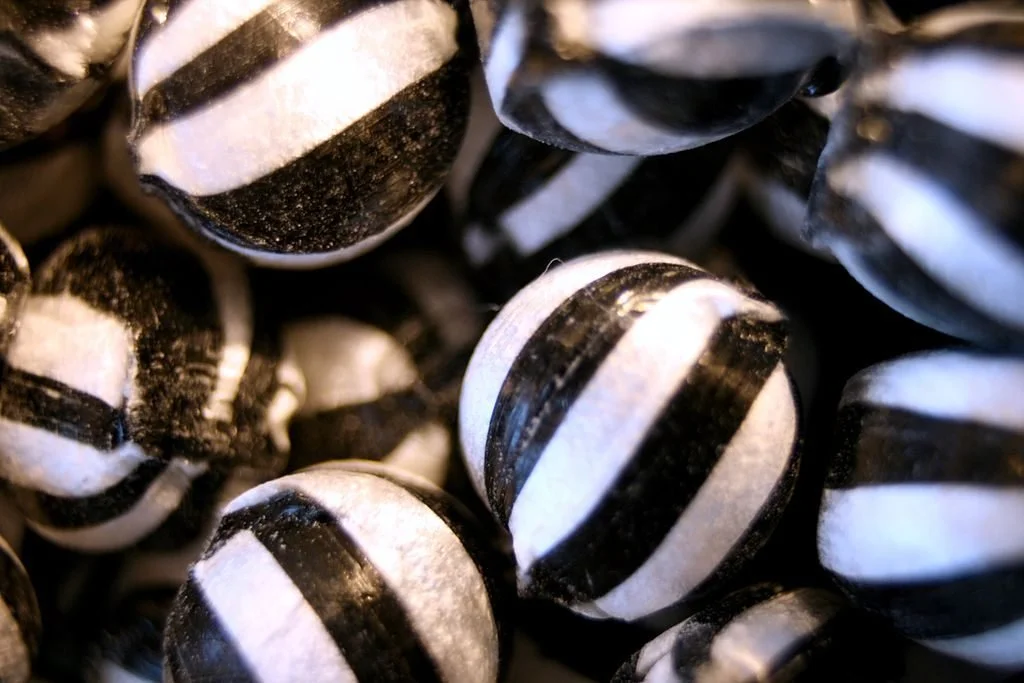Sweet, Deadly Secrets of 1858: The Bradford Humbug Poisoning
On the fateful day of October 30, 1858, in Bradford, England, a candy vendor named William Hardaker set up his stall in the bustling Green Market. His specialty was zebra-striped humbugs, a type of hard candy known for its peppermint flavor. Hardaker, a shrewd salesman, tempted eager factory workers with enticing discounts, compensating for the slight discoloration found in that day's batch. As the market day drew to a close, Hardaker had successfully sold five pounds of his sweet confections. Tragically, by the following morning, two local children, aged eight and 11, had met a grim demise.
During this era, characterized by high child mortality rates and the prevalence of diseases like cholera, the initial response from authorities attributed these untimely deaths to natural causes. However, by the evening of October 31, the Bradford Observer was reporting a disturbing rise in "sudden deaths" throughout the city.
The police were dispatched to a heart-wrenching scene at #30 Jowett Street. Inside the home, they discovered two young brothers, aged two and five, lifeless. Their anguished father, Mark Burran, suspected that the peppermint lozenges he had purchased might have played a role in their tragic deaths. His fears were tragically confirmed when a young man in the house decided to test the candies himself, consuming two pieces and promptly falling gravely ill.
Burran promptly reported the candy vendor's location in Green Market and the alias of the seller, known as "Humbug Billy." Simultaneously, physicians across Bradford were mobilized to attend to the numerous ailing and dying residents.
In the context of Victorian England, suspicions of poisoning were not unfounded. Laura Sellers, a curator at the Thackray Medical Museum in Leeds, notes that many substances of the time were toxic. Arsenic, for example, could be found in items like wallpaper, clothing fabric, and household cleaners. Poisoning was often the method of choice for murderers during this period.
Just one year before the Bradford tragedy, a young woman named Madeleine Smith in Glasgow had been accused of murdering her lover using arsenic. Although she was acquitted, the trial garnered significant media attention. Arsenic was readily accessible, tasteless, odorless, and its symptoms after ingestion often resembled illness. However, the quantity of arsenic discovered in Hardaker's humbugs far exceeded what could be attributed to accidental consumption.
However, as the authorities investigated further, they found Hardaker himself suffering in agony at home. He had consumed one of the tainted humbugs the previous night. The true cause behind the Bradford humbug poisoning was not a sinister mastermind but rather a widespread systemic failure driven by carelessness and profit-seeking.
The stricken stallholder initially pointed the finger at Joseph Neal, the confectionery wholesaler who had supplied him with the deadly lozenges. Neal's candy recipe included a mixture of sugar, gum, water, peppermint oil, and an ingredient known as "daft." Sellers explains that "daft" was a gypsum powder used to replace some sugar and reduce production costs. Adding fillers to food products was common and legal during that era. However, sweets were particularly vulnerable to adulteration due to the high cost of sugar.
Approximately two weeks before the tragedy, Neal had sent an employee to purchase 12 pounds of "daft" from a druggist in the nearby town of Shipley. Upon arrival, Neal's assistant found the druggist, Charles Hodgson, bedridden. The shop was being managed by an inexperienced apprentice, William Goddard, whom Hodgson hesitantly allowed to fulfill the order.
Neal's employee was determined not to return empty-handed, so Hodgson reluctantly directed Goddard to a large container in the shop's corner. Goddard dutifully scooped out significant amounts of white powder from an unlabeled container to fulfill the order. Unfortunately, he chose the wrong container, unwittingly handing Neal's assistant 12 pounds of arsenic trioxide.
In turn, the assistant delivered the substantial package of arsenic to James Appleton, a confectioner employed by Neal. Appleton added the entire 12 pounds of arsenic to a mixture of 40 pounds of lozenges. Later, after completing the candies, Appleton began vomiting, likely due to exposure to the massive quantity of arsenic. At the time, he believed it to be a stomach bug. It was later revealed in court that each candy contained a lethal dose of poison for an adult.
In the hours that followed, officers and town criers raced through the district, attempting to warn as many people as possible about the danger. As reported by the Bradford Observer, "the quiet slumbers of countless individuals were disrupted at midnight by the warning... the town's walls were heavily adorned with official cautions from the chief constable." This alert likely saved many lives, but it came too late for the seven adults and 13 children who had perished, including a child as young as 17 months.
After tracing the source of the arsenic in the humbugs, the police decided to arrest William Goddard, who had only three weeks of pharmacy experience, for the deaths. Shockingly, in December of that year, Goddard, his employer Hodgson, and candy wholesaler Joseph Neal were all acquitted because the prosecution could not establish a breach of existing laws. Hardaker resumed selling confectionery in the Green Market after recovering from his own ingestion of one of the tainted sweets.
Nevertheless, the case continued to resonate with the public. According to Sellers, the high-profile poisonings played a role in the enactment of the groundbreaking Pharmacy Act of 1868. This legislation mandated that designated poisons be sold in specialized bottles made of colored, textured glass to visually indicate their contents. Specific poisons had to be labeled, and stores were required to maintain registers of buyers' names.
Despite these new laws, it remained legal to purchase arsenic for household use. According to Kitty Ross, a social history curator at Leeds Museums and Galleries, numerous consumer products containing toxins continued to be sold. In accordance with the Pharmacy Act, they were labeled as poisonous but marketed to consumers as harmless.
Additionally, hazardous candies continued to cause severe bodily harm well into the 20th century. In an exhibition at Abbey House Museum in Leeds, Ross encountered a jar of throat lozenges containing potassium chlorate, a toxic and highly combustible substance. "It's the same material that's in blasting caps," says Ross. In August 1955, almost a century after the Bradford poisonings, a dry cleaner in Sunderland lost their life when a customer left such throat lozenges in their coat pocket. Upon contact with cleaning spirits, the candies exploded.
While tales of poisonous and explosive candies may seem like shocking relics of the past, the persistence of food and pharmaceutical contamination scandals today underscores the enduring issues of carelessness, cost-cutting, and inadequate regulation that contributed to the Bradford humbug poisoning of 1858. As Kitty Ross aptly puts it, "People tend to think, 'Look at those stupid Victorians,' but many of the same issues keep on coming back around."
Hungry For More?
You can make your own non-lethal version of this Victorian era candy with the recipe I provided below! You can also watch this amazing video from Wired on how hard candy is made. It’s soooooo gorgeous and therapuetic!
Peppermint Rock Candy
Ingredients
3 3/4 cups sugar
1 1/4 cup light corn syrup
1 cup water
1 pinch salt
Powdered sugar
1 teaspoon peppermint oil and 1 teaspoon of green food coloring can be used as per choice.
Instructions
Mix sugar, corn syrup, water and salt in a large, heavy saucepan. Cook these ingredients until the candy thermometer shows the temperature to be 300 degrees. Another way of knowing that the mixture has reached the desirable temperature is by releasing a few drops of the mixture in cold water. The moment these drops separate into hard threads, the appropriate temperature has been attained.
Stir candy with a wooden spoon after the temperature reaches 270 degrees to help to avoid the scorching of the mixture.
Remove from heat and add peppermint oil and food coloring.
Then prepare a cookie sheet and sprinkle powdered sugar on it. Pour the mix onto the cookie sheet.
When the candy so spread on the cookie sheet begins to harden, break the candy into pieces. It is then ready to be served.




